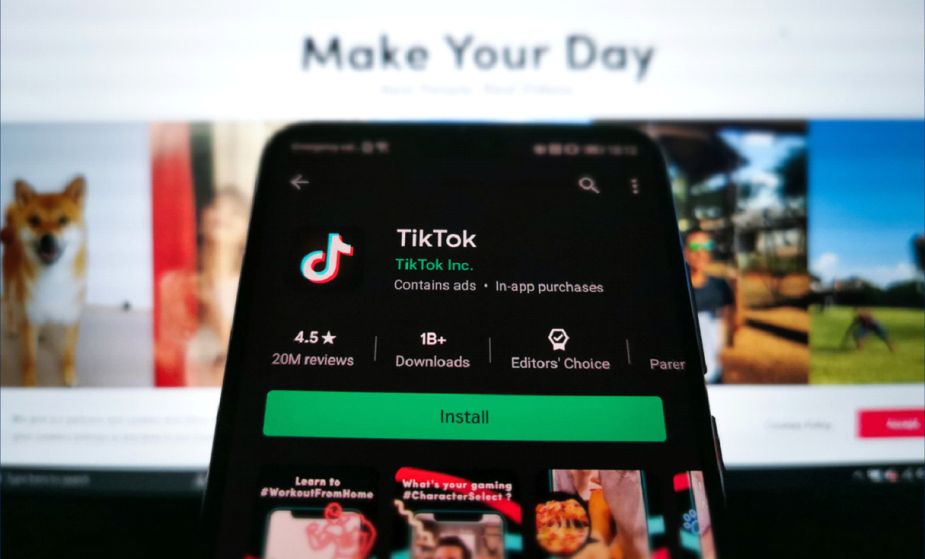
Social Commerce: Trends to watch in 2021

Social media is a term that refers to the use of It has altered how we communicate with one another and how we express ourselves. Half of the world's population is participating on one or more social media platforms. Social networking has a nearly unrivaled scope.
This opens up yet another e-commerce opportunity. Never before have the retail and e-commerce industries been able to reach such a large global audience. Among modern retailers, social commerce is the newest and fastest-growing trend. E-commerce companies are using it to engage their current and future customers and generate additional sales and revenue.
Using social media to sell goods online seems natural, and social shopping is the next big thing in online retail. The future of social commerce appears to be promising, thanks to the influence of social media and e-commerce.
In light of the pandemic, even conventional brick-and-mortar stores shift their focus to online sales, and social commerce is a creative way for brands to communicate and interact with their customers.
Let's take a look at what the future of social commerce will be like in 2021 and the developments to look out for.
Brands can build seamless e-commerce experiences directly within popular social media networks using social commerce.
For the future of social commerce, strong growth is anticipated.
According to reports, more than 87 percent of e-commerce customers firmly agree that social media affects their purchasing decisions. Social trading is not a modern concept; it has existed for quite some time.
The COVID-19 pandemic, on the other hand, is helping to raise its profile and results. The use of e-commerce has increased dramatically, as has the amount of time spent on social media. When you combine the two, you have a commercial engine ready to cash in.
Maturity of social media platforms
E-commerce capabilities have been built on all major social media channels. Pinterest catalogs, Facebook and Instagram shops, and TikTok's direct partnership with Shopify to allow online sales are just a few examples. Facebook is making significant progress in its social commerce efforts. Facebook Shops, which enables retailers to set up full-fledged storefronts on their Facebook business pages, was revealed in May of 2020.
Here is a success Story from Slovenia where a Bird Buddy, a smart bird feeder that notifies you of feathered visitors, captures their photos, and organizes them into collections to view and share. Facebook apps and services help smart bird feeder businesses take flight.
The business has done the same thing for its other social media site, Instagram, naming it Instagram Shops. Both of these commerce features are being rolled out to more merchants at regular intervals.
Merchants who meet the company's eligibility requirements will use its "in-app checkout" functionality. This eliminates the need for shoppers to leave Instagram to complete their orders. It could all take place on Instagram.
WhatsApp has also been added to the mix, allowing for in-app purchases. Users will be able to browse items on Facebook Shops and purchase them directly via the chat option.
Conversational chatbots for social commerce will rise
Consumers will spend more when their shopping experience is tailored, according to research. However, doing so at scale, particularly in social media, where you have much less control over the channel's infrastructure, can be difficult.
Using chatbots as a solution to the personalization problem is one choice. While chatbots have limitations regarding how specific they can be, they can provide consumers with short, straightforward answers to their questions.

Future of social commerce is video and live streaming.
These days, the video makes up a large portion of social media material. In reality, video is a feature on all major social media sites. In the form of short video ‘stories.' Video has a much higher level of viewer participation, and retailers are taking note.
Many online retailers are already using TikTok to sell their items. Users on the app are sure to be captivated by interactive videos that display the goods in action. Similarly, several businesses are also using Snapchat storefronts and Instagram Reels to sell their goods.

Influencers will drive social commerce
Influencers have become an essential part of social media and how we consume content. With the growth of social commerce, they are becoming an even more important commodity for businesses. They have a devoted following who are still listening to what they have to say.
Influencer marketing, in reality, produces as much, if not more, revenue than other forms of marketing. Influencers will play a more significant role as brand ambassadors and will be able to sell directly via their social media platforms.
Influencers and social media are here to stay. Influencers will become even more deeply incorporated into brand marketing strategies in 2021. Influencers will also help advertisers understand what their target markets want. The brands will then curate highly tailored personalized items and campaigns.

The next move in omnichannel retail is social commerce
Since several retailers have already adopted omnichannel shopping, social commerce would be the next step in the process. Retailers are now using social media to push traffic to their websites and channels. Instead of only driving traffic, they will now use the same advertisement dollars to produce revenue.

They can engage consumers and encourage purchases via social commerce without leaving the social platform they're on. Shorter sales periods and faster sales are the benefits of this. When consumers engage in social commerce, they will make a purchase right away. Retailers would need to integrate social commerce as a channel into their omnichannel retail stack.
UGC content in social commerce will emerge
When more consumers turn to the internet for their shopping needs, social media sites capitalize on the trend. Social media platforms are increasingly investing in features that enable users to monetize their content.
Although shoppable social proof has proven to be an effective way for retailers to reach out to customers on social media, the importance of user-generated content can (and should) extend far beyond social media. Extending shoppable content beyond third-party sites like social networks and into owned channels like homepages, product pages, emails, and more will help marketers build more reliable and engaging omnichannel experiences, allowing customers to purchase no matter where they are in the consumer journey.
Organic traffic is one of the most effective ways to attract new customers. It increases the probability that viewers will prioritize you when purchasing by assuring them of your brand's reputation.
Before purchasing from a company, today's customers demand social evidence. They wouldn't pick a brand solely based on its innovative advertising campaigns. Before making a purchase, they want to see people just like them engaging with your product and having a good time.
As a result, user-generated content marketing has proven to be a successful technique for connecting brands with their target audience. TikTok is a social media platform that uses user-generated content to promote social sales.

Voice and VR, the future of social commerce will become more futuristic
Every day, voice recognition technology improves and becomes more accurate. More than ever, Alexa, Siri, and Ok Google are being used to ask for shopping-related recommendations. Smart home devices are also making them more popular in many households.
Customers will use voice to browse for and explore new items, and if the ecosystem is set up correctly, they will also use voice to make purchases.
Augmented reality is another brilliant breakthrough that has the potential to change social commerce (AR). Consider this: a consumer will see how a product can appear in their specific environment. Isn't that going to be something?

Social networking powerhouses like Snapchat and Facebook have also committed significant resources to create augmented reality capabilities that can help their sites boost revenue. Sure, the AR social commerce journey is still in its early stages, but it will quickly gain momentum.
In 2021, social commerce will continue to expand, with e-commerce and brick-and-mortar retailers using it to boost sales. The concept of social commerce would evolve in tandem with the growth of social media.
Keeping in touch with clients is a difficult task in the retail industry—understanding consumers and how they want to purchase is required by brands to maintain relationships and inspire them.
Retailers must embrace e-commerce transformation and provide their customers with what they want: a fast, seamless experience across all sales channels.
My recommendation to retailers is to take advantage of any opportunities to interact with their customers. It will only get busier as more customers conduct product searches on social media networks.
Retailers can be in the place where today's customers shop and where future customers spend more of their time with the correct approach.
Maris Naglis is VP, Customer Success at Httpool










